Sanja Fidler
NVIDIA, University of Toronto, Vector Institute
EditGAN: High-Precision Semantic Image Editing
Nov 04, 2021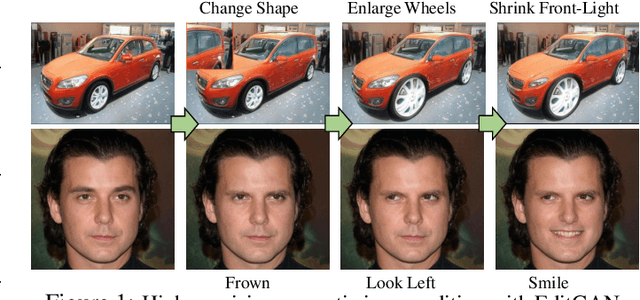
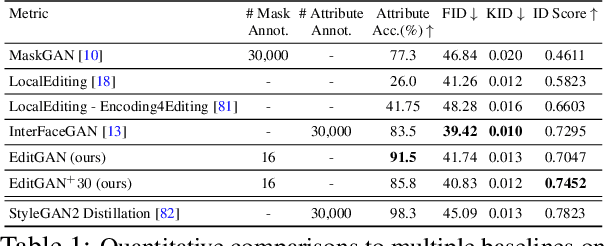
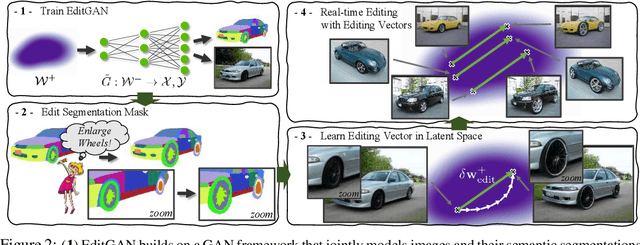
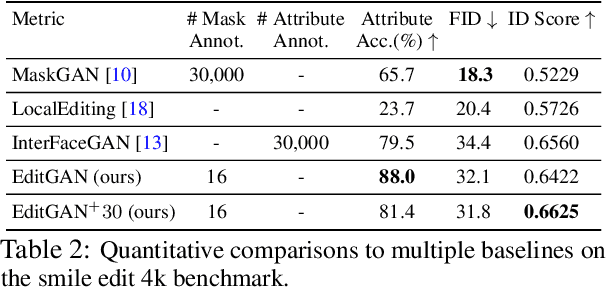
Abstract:Generative adversarial networks (GANs) have recently found applications in image editing. However, most GAN based image editing methods often require large scale datasets with semantic segmentation annotations for training, only provide high level control, or merely interpolate between different images. Here, we propose EditGAN, a novel method for high quality, high precision semantic image editing, allowing users to edit images by modifying their highly detailed part segmentation masks, e.g., drawing a new mask for the headlight of a car. EditGAN builds on a GAN framework that jointly models images and their semantic segmentations, requiring only a handful of labeled examples, making it a scalable tool for editing. Specifically, we embed an image into the GAN latent space and perform conditional latent code optimization according to the segmentation edit, which effectively also modifies the image. To amortize optimization, we find editing vectors in latent space that realize the edits. The framework allows us to learn an arbitrary number of editing vectors, which can then be directly applied on other images at interactive rates. We experimentally show that EditGAN can manipulate images with an unprecedented level of detail and freedom, while preserving full image quality.We can also easily combine multiple edits and perform plausible edits beyond EditGAN training data. We demonstrate EditGAN on a wide variety of image types and quantitatively outperform several previous editing methods on standard editing benchmark tasks.
DIB-R++: Learning to Predict Lighting and Material with a Hybrid Differentiable Renderer
Oct 30, 2021


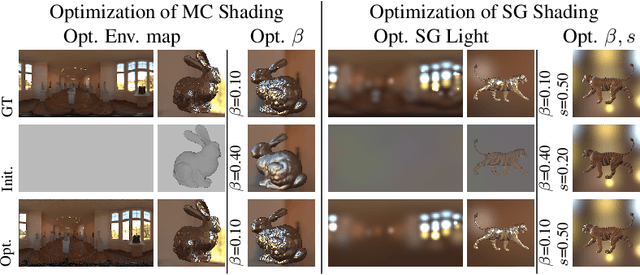
Abstract:We consider the challenging problem of predicting intrinsic object properties from a single image by exploiting differentiable renderers. Many previous learning-based approaches for inverse graphics adopt rasterization-based renderers and assume naive lighting and material models, which often fail to account for non-Lambertian, specular reflections commonly observed in the wild. In this work, we propose DIBR++, a hybrid differentiable renderer which supports these photorealistic effects by combining rasterization and ray-tracing, taking the advantage of their respective strengths -- speed and realism. Our renderer incorporates environmental lighting and spatially-varying material models to efficiently approximate light transport, either through direct estimation or via spherical basis functions. Compared to more advanced physics-based differentiable renderers leveraging path tracing, DIBR++ is highly performant due to its compact and expressive shading model, which enables easy integration with learning frameworks for geometry, reflectance and lighting prediction from a single image without requiring any ground-truth. We experimentally demonstrate that our approach achieves superior material and lighting disentanglement on synthetic and real data compared to existing rasterization-based approaches and showcase several artistic applications including material editing and relighting.
ATISS: Autoregressive Transformers for Indoor Scene Synthesis
Oct 07, 2021



Abstract:The ability to synthesize realistic and diverse indoor furniture layouts automatically or based on partial input, unlocks many applications, from better interactive 3D tools to data synthesis for training and simulation. In this paper, we present ATISS, a novel autoregressive transformer architecture for creating diverse and plausible synthetic indoor environments, given only the room type and its floor plan. In contrast to prior work, which poses scene synthesis as sequence generation, our model generates rooms as unordered sets of objects. We argue that this formulation is more natural, as it makes ATISS generally useful beyond fully automatic room layout synthesis. For example, the same trained model can be used in interactive applications for general scene completion, partial room re-arrangement with any objects specified by the user, as well as object suggestions for any partial room. To enable this, our model leverages the permutation equivariance of the transformer when conditioning on the partial scene, and is trained to be permutation-invariant across object orderings. Our model is trained end-to-end as an autoregressive generative model using only labeled 3D bounding boxes as supervision. Evaluations on four room types in the 3D-FRONT dataset demonstrate that our model consistently generates plausible room layouts that are more realistic than existing methods. In addition, it has fewer parameters, is simpler to implement and train and runs up to 8 times faster than existing methods.
Physics-based Human Motion Estimation and Synthesis from Videos
Sep 21, 2021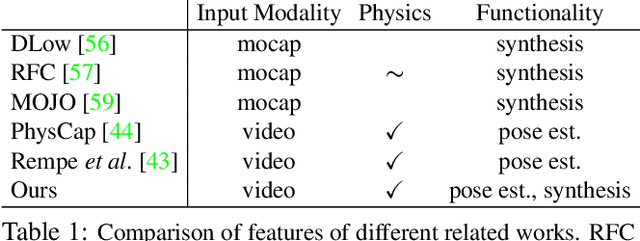

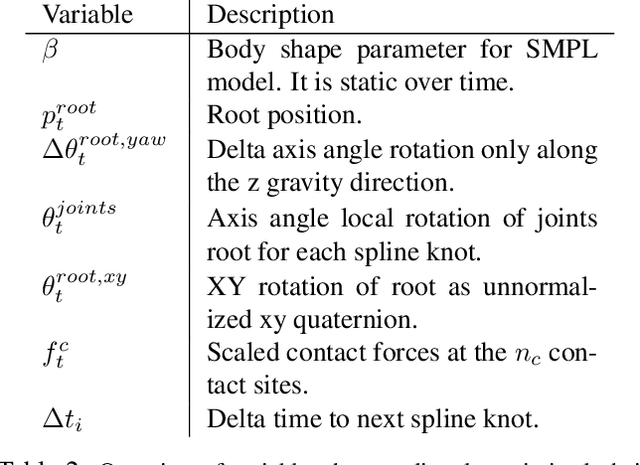

Abstract:Human motion synthesis is an important problem with applications in graphics, gaming and simulation environments for robotics. Existing methods require accurate motion capture data for training, which is costly to obtain. Instead, we propose a framework for training generative models of physically plausible human motion directly from monocular RGB videos, which are much more widely available. At the core of our method is a novel optimization formulation that corrects imperfect image-based pose estimations by enforcing physics constraints and reasons about contacts in a differentiable way. This optimization yields corrected 3D poses and motions, as well as their corresponding contact forces. Results show that our physically-corrected motions significantly outperform prior work on pose estimation. We can then use these to train a generative model to synthesize future motion. We demonstrate both qualitatively and quantitatively significantly improved motion estimation, synthesis quality and physical plausibility achieved by our method on the large scale Human3.6m dataset \cite{h36m_pami} as compared to prior kinematic and physics-based methods. By enabling learning of motion synthesis from video, our method paves the way for large-scale, realistic and diverse motion synthesis.
Learning Indoor Inverse Rendering with 3D Spatially-Varying Lighting
Sep 13, 2021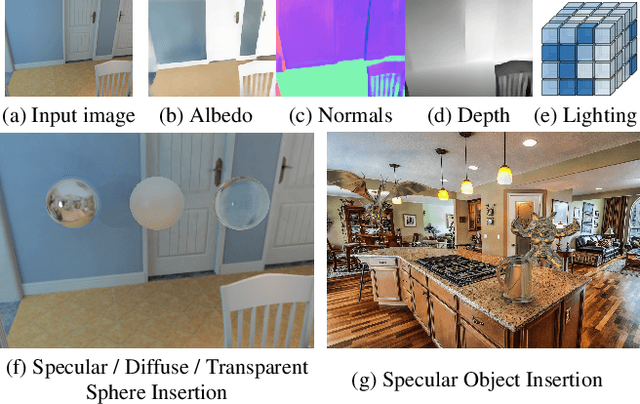

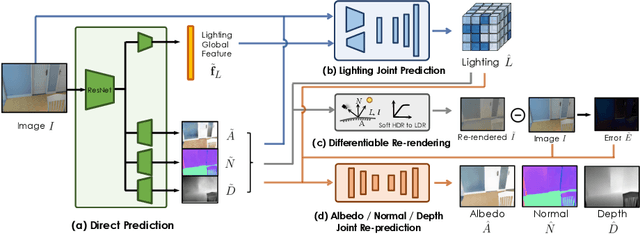
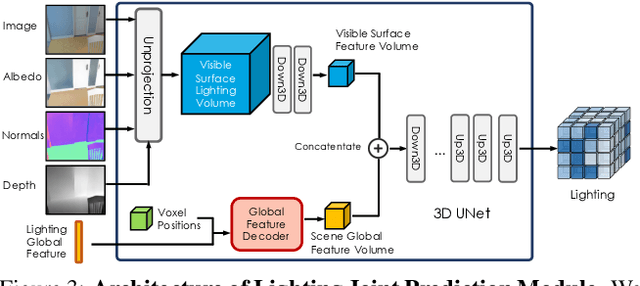
Abstract:In this work, we address the problem of jointly estimating albedo, normals, depth and 3D spatially-varying lighting from a single image. Most existing methods formulate the task as image-to-image translation, ignoring the 3D properties of the scene. However, indoor scenes contain complex 3D light transport where a 2D representation is insufficient. In this paper, we propose a unified, learning-based inverse rendering framework that formulates 3D spatially-varying lighting. Inspired by classic volume rendering techniques, we propose a novel Volumetric Spherical Gaussian representation for lighting, which parameterizes the exitant radiance of the 3D scene surfaces on a voxel grid. We design a physics based differentiable renderer that utilizes our 3D lighting representation, and formulates the energy-conserving image formation process that enables joint training of all intrinsic properties with the re-rendering constraint. Our model ensures physically correct predictions and avoids the need for ground-truth HDR lighting which is not easily accessible. Experiments show that our method outperforms prior works both quantitatively and qualitatively, and is capable of producing photorealistic results for AR applications such as virtual object insertion even for highly specular objects.
3DStyleNet: Creating 3D Shapes with Geometric and Texture Style Variations
Aug 30, 2021


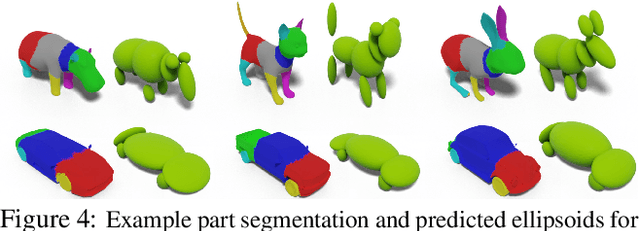
Abstract:We propose a method to create plausible geometric and texture style variations of 3D objects in the quest to democratize 3D content creation. Given a pair of textured source and target objects, our method predicts a part-aware affine transformation field that naturally warps the source shape to imitate the overall geometric style of the target. In addition, the texture style of the target is transferred to the warped source object with the help of a multi-view differentiable renderer. Our model, 3DStyleNet, is composed of two sub-networks trained in two stages. First, the geometric style network is trained on a large set of untextured 3D shapes. Second, we jointly optimize our geometric style network and a pre-trained image style transfer network with losses defined over both the geometry and the rendering of the result. Given a small set of high-quality textured objects, our method can create many novel stylized shapes, resulting in effortless 3D content creation and style-ware data augmentation. We showcase our approach qualitatively on 3D content stylization, and provide user studies to validate the quality of our results. In addition, our method can serve as a valuable tool to create 3D data augmentations for computer vision tasks. Extensive quantitative analysis shows that 3DStyleNet outperforms alternative data augmentation techniques for the downstream task of single-image 3D reconstruction.
NP-DRAW: A Non-Parametric Structured Latent Variable Model for Image Generation
Jul 04, 2021
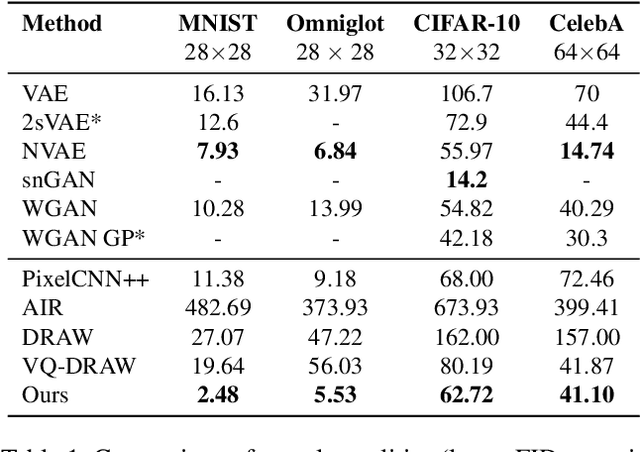
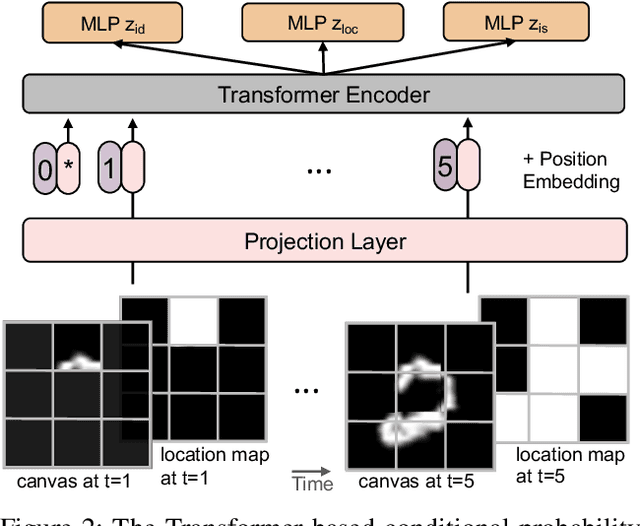
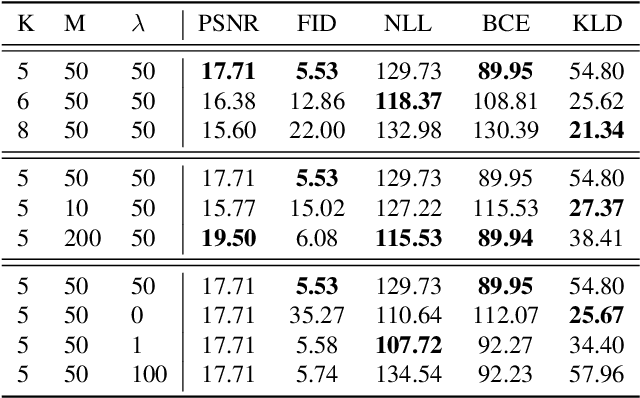
Abstract:In this paper, we present a non-parametric structured latent variable model for image generation, called NP-DRAW, which sequentially draws on a latent canvas in a part-by-part fashion and then decodes the image from the canvas. Our key contributions are as follows. 1) We propose a non-parametric prior distribution over the appearance of image parts so that the latent variable ``what-to-draw'' per step becomes a categorical random variable. This improves the expressiveness and greatly eases the learning compared to Gaussians used in the literature. 2) We model the sequential dependency structure of parts via a Transformer, which is more powerful and easier to train compared to RNNs used in the literature. 3) We propose an effective heuristic parsing algorithm to pre-train the prior. Experiments on MNIST, Omniglot, CIFAR-10, and CelebA show that our method significantly outperforms previous structured image models like DRAW and AIR and is competitive to other generic generative models. Moreover, we show that our model's inherent compositionality and interpretability bring significant benefits in the low-data learning regime and latent space editing. Code is available at https://github.com/ZENGXH/NPDRAW.
f-Domain-Adversarial Learning: Theory and Algorithms
Jun 21, 2021
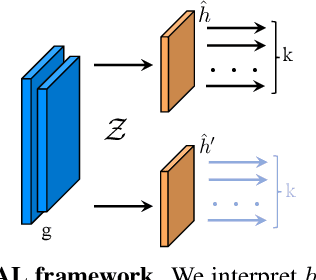
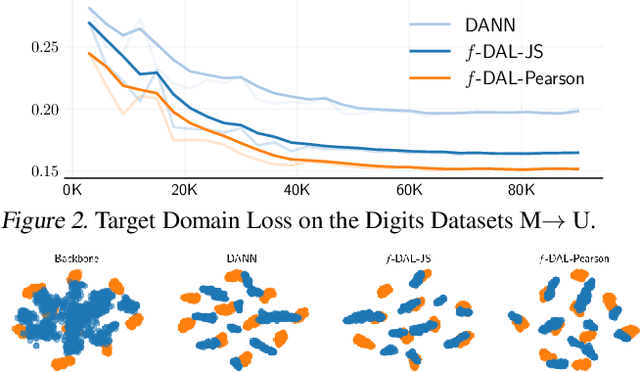

Abstract:Unsupervised domain adaptation is used in many machine learning applications where, during training, a model has access to unlabeled data in the target domain, and a related labeled dataset. In this paper, we introduce a novel and general domain-adversarial framework. Specifically, we derive a novel generalization bound for domain adaptation that exploits a new measure of discrepancy between distributions based on a variational characterization of f-divergences. It recovers the theoretical results from Ben-David et al. (2010a) as a special case and supports divergences used in practice. Based on this bound, we derive a new algorithmic framework that introduces a key correction in the original adversarial training method of Ganin et al. (2016). We show that many regularizers and ad-hoc objectives introduced over the last years in this framework are then not required to achieve performance comparable to (if not better than) state-of-the-art domain-adversarial methods. Experimental analysis conducted on real-world natural language and computer vision datasets show that our framework outperforms existing baselines, and obtains the best results for f-divergences that were not considered previously in domain-adversarial learning.
Low Budget Active Learning via Wasserstein Distance: An Integer Programming Approach
Jun 12, 2021
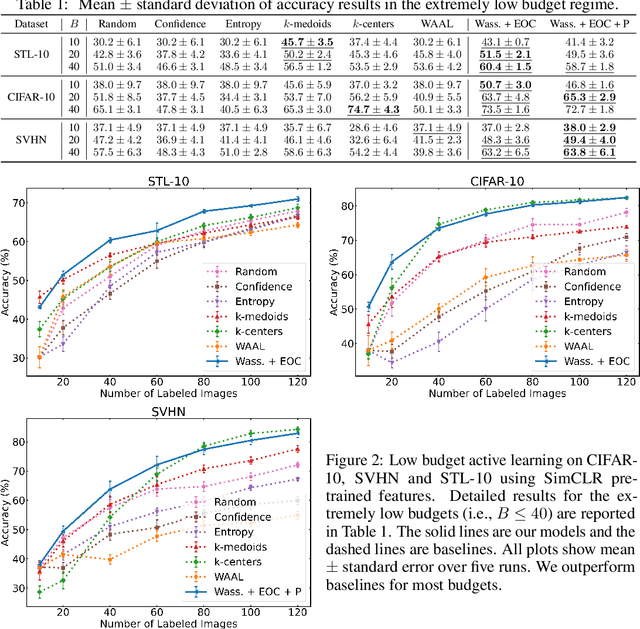


Abstract:Given restrictions on the availability of data, active learning is the process of training a model with limited labeled data by selecting a core subset of an unlabeled data pool to label. Although selecting the most useful points for training is an optimization problem, the scale of deep learning data sets forces most selection strategies to employ efficient heuristics. Instead, we propose a new integer optimization problem for selecting a core set that minimizes the discrete Wasserstein distance from the unlabeled pool. We demonstrate that this problem can be tractably solved with a Generalized Benders Decomposition algorithm. Our strategy requires high-quality latent features which we obtain by unsupervised learning on the unlabeled pool. Numerical results on several data sets show that our optimization approach is competitive with baselines and particularly outperforms them in the low budget regime where less than one percent of the data set is labeled.
DriveGAN: Towards a Controllable High-Quality Neural Simulation
Apr 30, 2021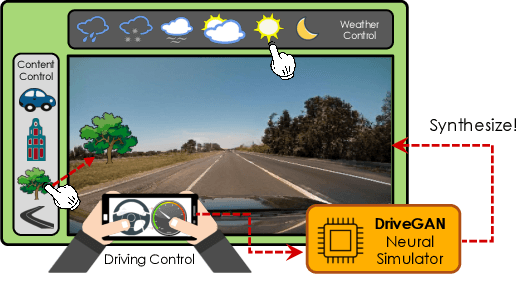
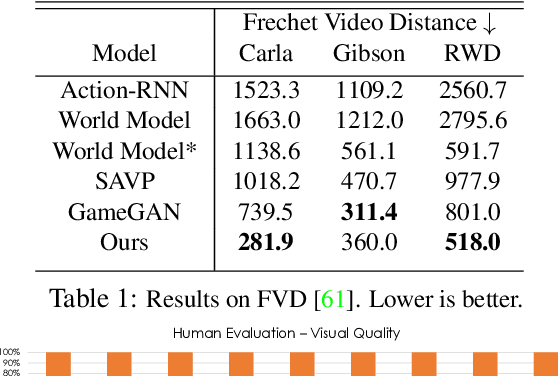
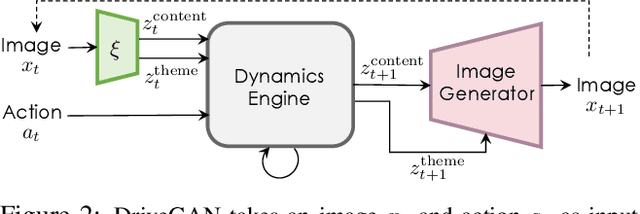
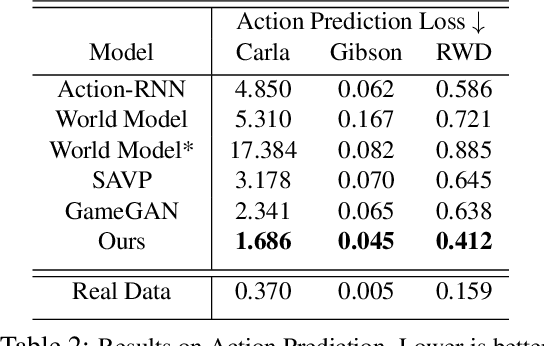
Abstract:Realistic simulators are critical for training and verifying robotics systems. While most of the contemporary simulators are hand-crafted, a scaleable way to build simulators is to use machine learning to learn how the environment behaves in response to an action, directly from data. In this work, we aim to learn to simulate a dynamic environment directly in pixel-space, by watching unannotated sequences of frames and their associated action pairs. We introduce a novel high-quality neural simulator referred to as DriveGAN that achieves controllability by disentangling different components without supervision. In addition to steering controls, it also includes controls for sampling features of a scene, such as the weather as well as the location of non-player objects. Since DriveGAN is a fully differentiable simulator, it further allows for re-simulation of a given video sequence, offering an agent to drive through a recorded scene again, possibly taking different actions. We train DriveGAN on multiple datasets, including 160 hours of real-world driving data. We showcase that our approach greatly surpasses the performance of previous data-driven simulators, and allows for new features not explored before.
 Add to Chrome
Add to Chrome Add to Firefox
Add to Firefox Add to Edge
Add to Edge